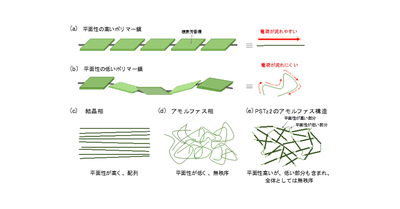2023-09-21 バース大学
◆技術は概念段階で、スケールアップと他の用途の研究が進行中です。この革新的な発見は、海水淡水化や水の回収に革命をもたらす可能性があるとされています。
<関連情報>
- https://www.bath.ac.uk/announcements/new-method-for-purifying-drinking-water-could-be-used-in-disaster-zones/
- https://pubs.acs.org/doi/10.1021/acsami.3c10220
イオンダイオードにおける不可逆電気浸透水の流れの調整と結合: 本質的に微多孔性のポリアミンのメチル化 (PIM-EA-TB) Tuning and Coupling Irreversible Electroosmotic Water Flow in Ionic Diodes: Methylation of an Intrinsically Microporous Polyamine (PIM-EA-TB)
Zhongkai Li, John P. Lowe, Philip J. Fletcher, Mariolino Carta, Neil B. McKeown, and Frank Marken
ACS Applied Materials & Interfaces Published:August 28, 2023
DOI:https://doi.org/10.1021/acsami.3c10220
Abstract

Molecularly rigid polymers with internal charges (positive charges induced by amine methylation) allow electroosmotic water flow to be tuned by adjusting the charge density (the degree of methylation). Here, a microporous polyamine (PIM-EA-TB) is methylated to give a molecularly rigid anion conductor. The electroosmotic drag coefficient (the number of water molecules transported per anion) is shown to increase with a lower degree of methylation. Net water transport (without charge flow) in a coupled anionic diode circuit is demonstrated based on combining low and high electroosmotic drag coefficient materials. The AC-electricity-driven net process offers water transport (or transport of other neutral species, e.g., drugs) with net zero ion transport and without driver electrode side reactions.



